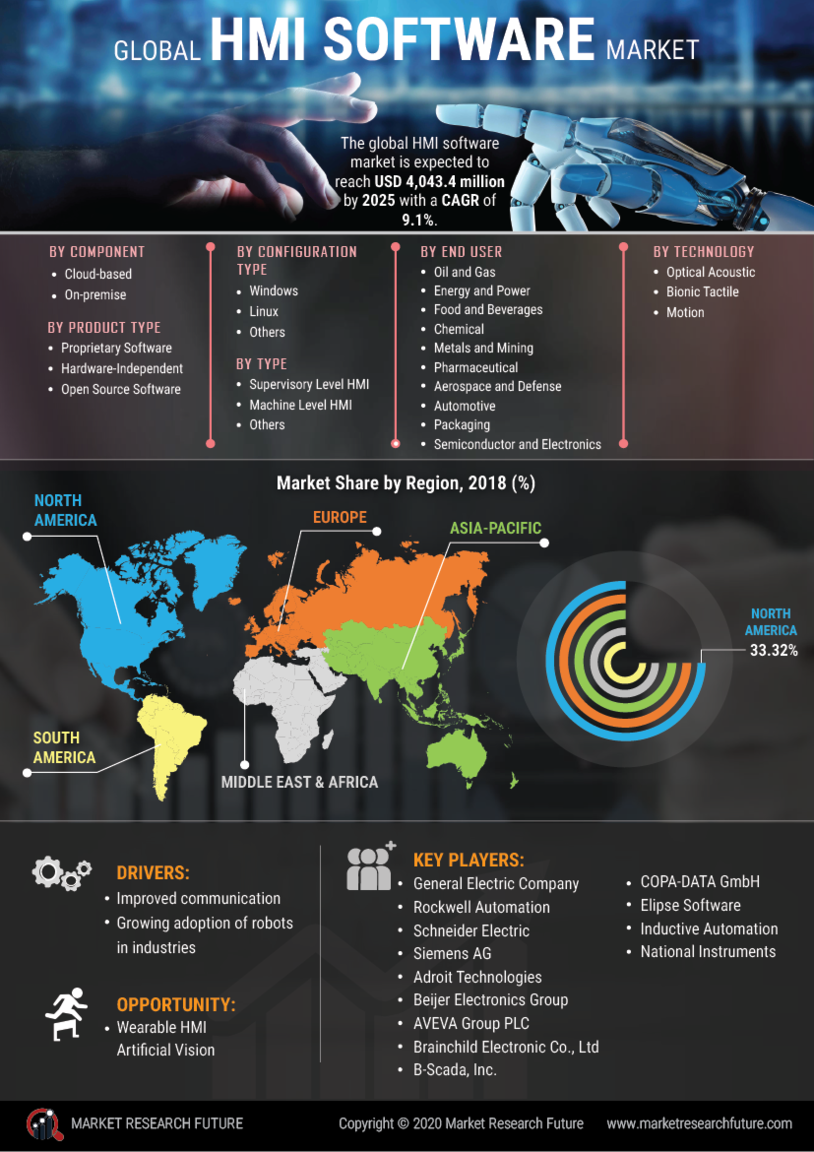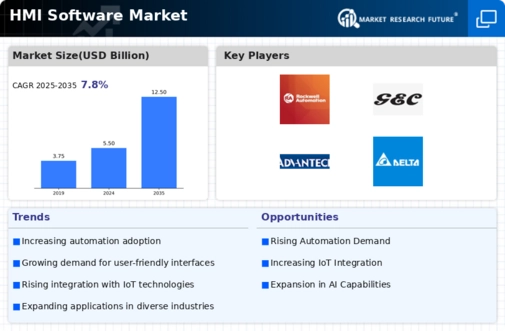HMI Software Market Summary
As per Market Research Future Analysis, the HMI Software Market was valued at USD 4.7 Billion in 2022 and is projected to grow from USD 5.1 Billion in 2023 to USD 8.6 Billion by 2030, with a CAGR of 7.8% during the forecast period. The growth is driven by increasing digital transformation initiatives, hyper automation deployment, and the adoption of Industry 4.0 norms across various industries.
Key Market Trends & Highlights
Key trends driving the HMI Software Market include advancements in technology and increased demand for automation.
- Cloud-based deployment holds over 59.5% market share in 2023, valued at USD 2.76 Billion in 2022.
- Embedded HMI accounts for more than 70% of the market share in 2023, driven by user-friendly interfaces and cost-effectiveness.
- Asia Pacific dominates the market with a 34.9% share in 2023, expected to grow at a CAGR of 9.7%.
Market Size & Forecast
| 2022 Market Size | USD 4.7 Billion |
| 2023 Market Size | USD 5.1 Billion |
| 2030 Market Size | USD 8.6 Billion |
| CAGR (2023-2030) | 7.8% |
Major Players
Major players include Siemens AG, Schneider Electric SE, Rockwell Automation Inc, Honeywell International Inc, ABB Ltd, Mitsubishi Electric Corporation, General Electric Company, Emerson Electric Co, Yokogawa Electric Corporation, Bosch Rexroth AG, Omron Corporation, Parker Hannifin Corporation, Advantech Co, Delta Electronics, Inc, and Beijer Electronics AB.














